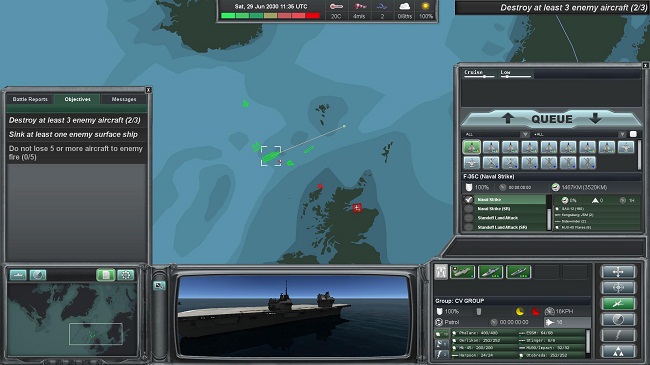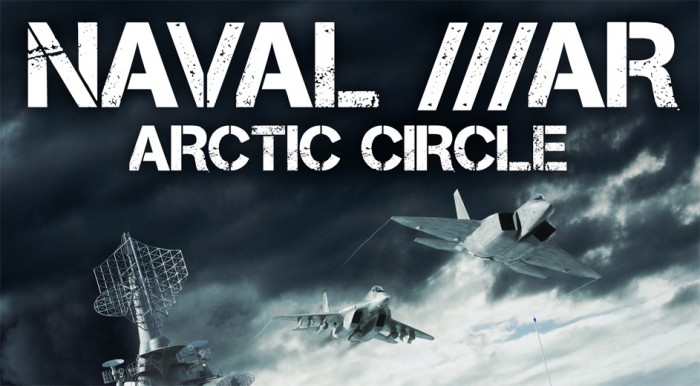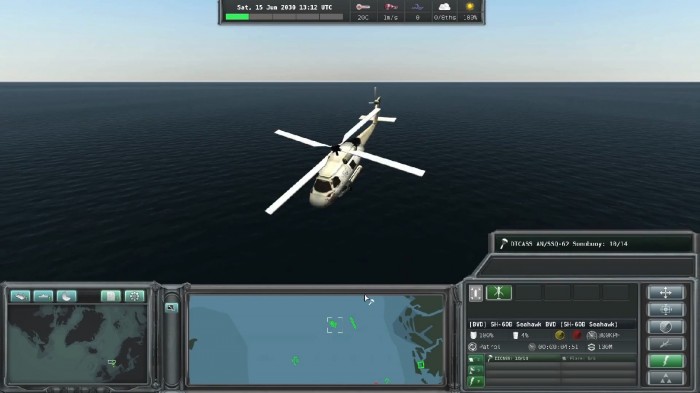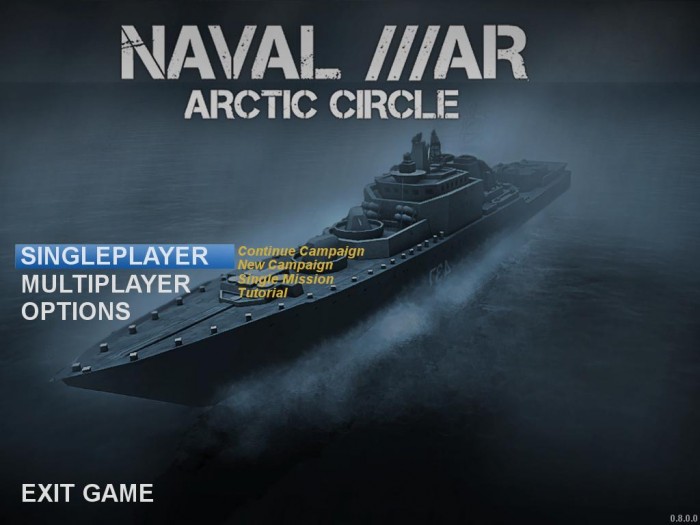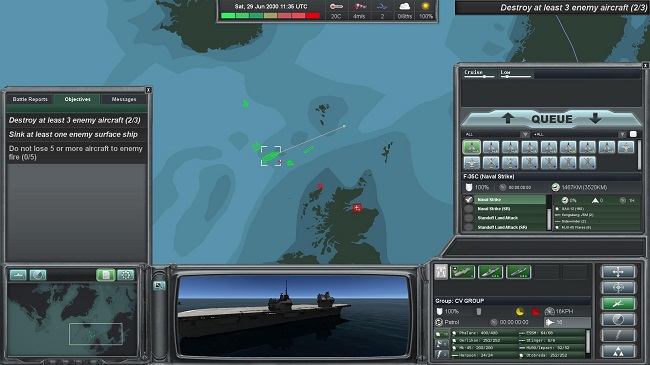The words “strategy game” can bring up a lot of different things in a persons head. The fact is that it is a term almost as general as “RPG” anymore as to what it can represent, some might even call it a catch phrase that fits such a wide number of games that it always has to be qualified to be truly understood. The first way we generally qualify “strategy games” is with turn-based or real time. This narrows the field in half usually and can be further narrowed down but one of the sub-categories is “real real-time” which is almost never heard due to its apparent redundancy. But for the sake of understanding Naval War: Arctic Circle you really need to understand what is fairly unique in this modern game sub-category is and exactly how it works. Or you might find yourself buying a game you hate in the first two hours, hate not being too strong of a word.
There are tons of examples of real-time games out there, you build a base, build some soldiers, find a way to make money and all this takes place in real time, you can slow down the game speed or speed it up but you don’t wait for your enemy to attack before you attack or heal your forces. In the time you are taking to build your forces your enemy is doing the same and so it is known as real time. This really is breaking down the idea to a fundamental that could be argued but for the sake of explanation we will use the above to define real-time strategy gaming. Then there are games like Naval War: Arctic Circle which is a “real real-time” game which means as long as you don’t speed up the gameplay everything will happen at a speed and impact as real life. It may take you five minutes to build a base in a standard strategy game, in Arctic Circle it may take you 30 minutes real life time to drop a sonar buoy off to detect an enemy, and there may be nothing to see for miles around in your shot but your helicopter flying over a choppy sea. There may literally be nothing for you to do until that buoy drops or there may be 50 things you have to do during that period if you want to beat the level, all based on how long it would take in the real world. “Real real-time strategy” games are for a particular breed of gamer, ones who crave the greatest realism possible, ones who want absolute historical and military accuracy on every aspect of the game. Admittedly I am not one who dives into this game style every chance I get but I also believe these are the true chess of video games, these games exercise your mind as much as your body so I never shy away from one.
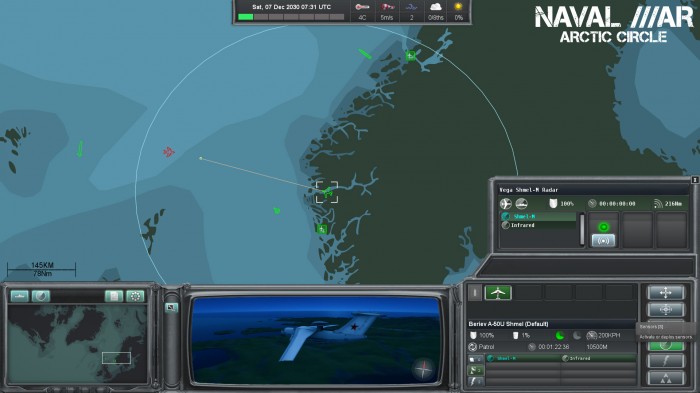 The view above is what you had better get used to because that is what you see. You can switch the image in the bottom box to the top to see how nice the planes and helicopters you use are rendered but in the end you will wind up putting it down in the little box again because this is not a game of graphics. They can look nice, heck they could have been crap since the key to this kind of game is not in how clean everything looks but the intelligence of your opponent, CPU or player, and whether or not you have the ability to outmaneuver them. First step: read the manual. Learn absolutely everything you can about this game’s mechanics because it is hard. It is meant to be hard. It is meant to be hated and loved at the same time for it’s difficulty and the fact that everything is happening in “real real-time.” You’ll find yourself cursing from a simple misclick or a minor mistake because that might mean the difference between those red plane markers on your screen wiping out your fleet or not. You’ll want to zoom in on an explosion about to happen but you need to think twice because while you are watch a fireball bloom that used to be your enemy’s ship, two more might be joining it. It is your war room, you are calling the shots.
The view above is what you had better get used to because that is what you see. You can switch the image in the bottom box to the top to see how nice the planes and helicopters you use are rendered but in the end you will wind up putting it down in the little box again because this is not a game of graphics. They can look nice, heck they could have been crap since the key to this kind of game is not in how clean everything looks but the intelligence of your opponent, CPU or player, and whether or not you have the ability to outmaneuver them. First step: read the manual. Learn absolutely everything you can about this game’s mechanics because it is hard. It is meant to be hard. It is meant to be hated and loved at the same time for it’s difficulty and the fact that everything is happening in “real real-time.” You’ll find yourself cursing from a simple misclick or a minor mistake because that might mean the difference between those red plane markers on your screen wiping out your fleet or not. You’ll want to zoom in on an explosion about to happen but you need to think twice because while you are watch a fireball bloom that used to be your enemy’s ship, two more might be joining it. It is your war room, you are calling the shots.
There are two different campaigns, both based in a near future Cold War. It is nice that you aren’t just confined to a NATO campaign and each one has it’s own particular heavy challenges to overcome. Multiplayer is one on one and really does feel like a fastest fingers/best macros kind of contest, but still requires strategy. As with most real real-time games you can preset certain aspects of the games such as standard cruising altitude and speed on aircraft so that you can concentrate on the big picture, though as so often as it is in games it is also in real life: gotta watch those little things or they build up to a big bite in the arse. The option to micromanage is always there, use it wisely.
Last Call:
These are often the dream games of historians and military specialists (or people who consider themselves such). You aren’t just running around with a grunt and his rifle, you are commanding the entire Arctic Circle including that grunt but also a whole theater of men and machines. Some will just shake their heads at this game and go grab their plasma gun. Others will crack their necks and knuckles, get comfortable in their computer chair and spend two hours laying buoys to capture an illusive enemy sub. This game is a hard road to glory, a mental challenge not all can complete and requires the mind of a chess player with the mouse finger of a competitive gamer. Will you answer the call?.

